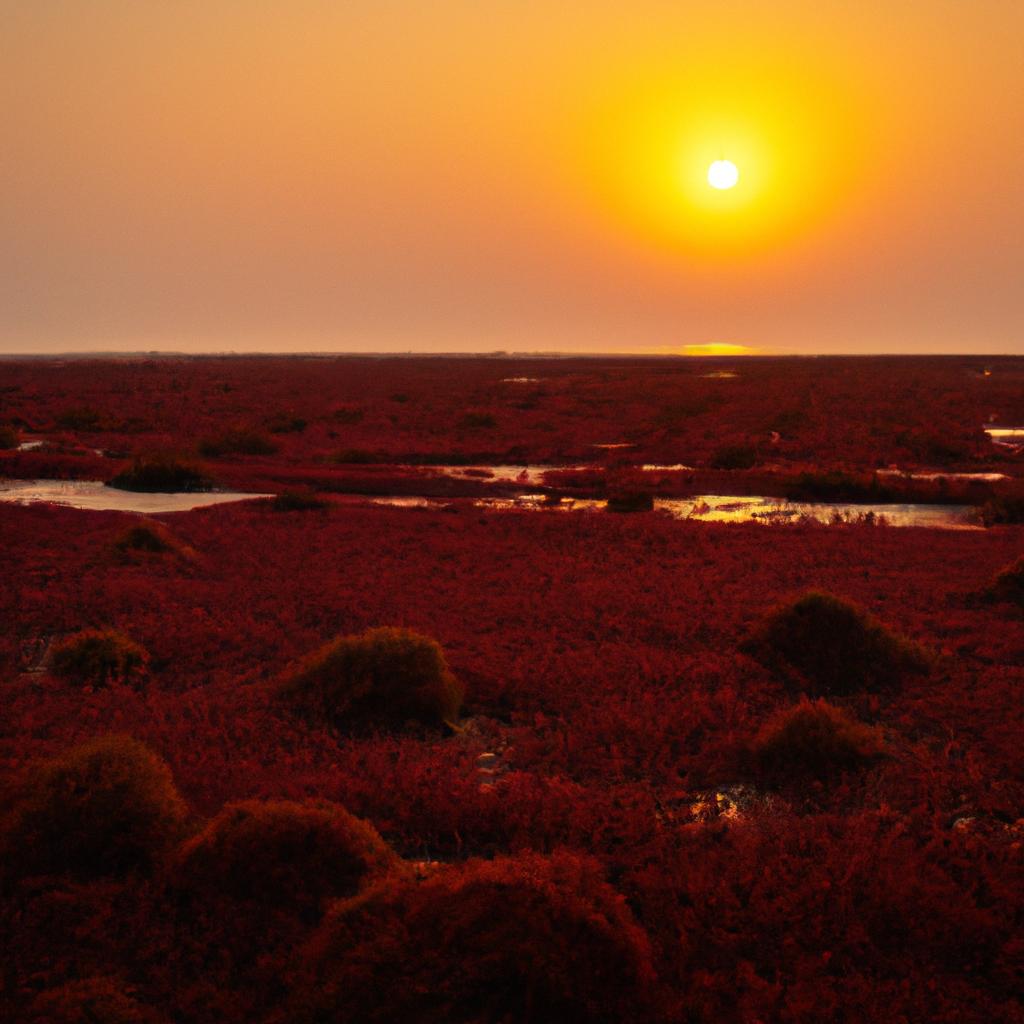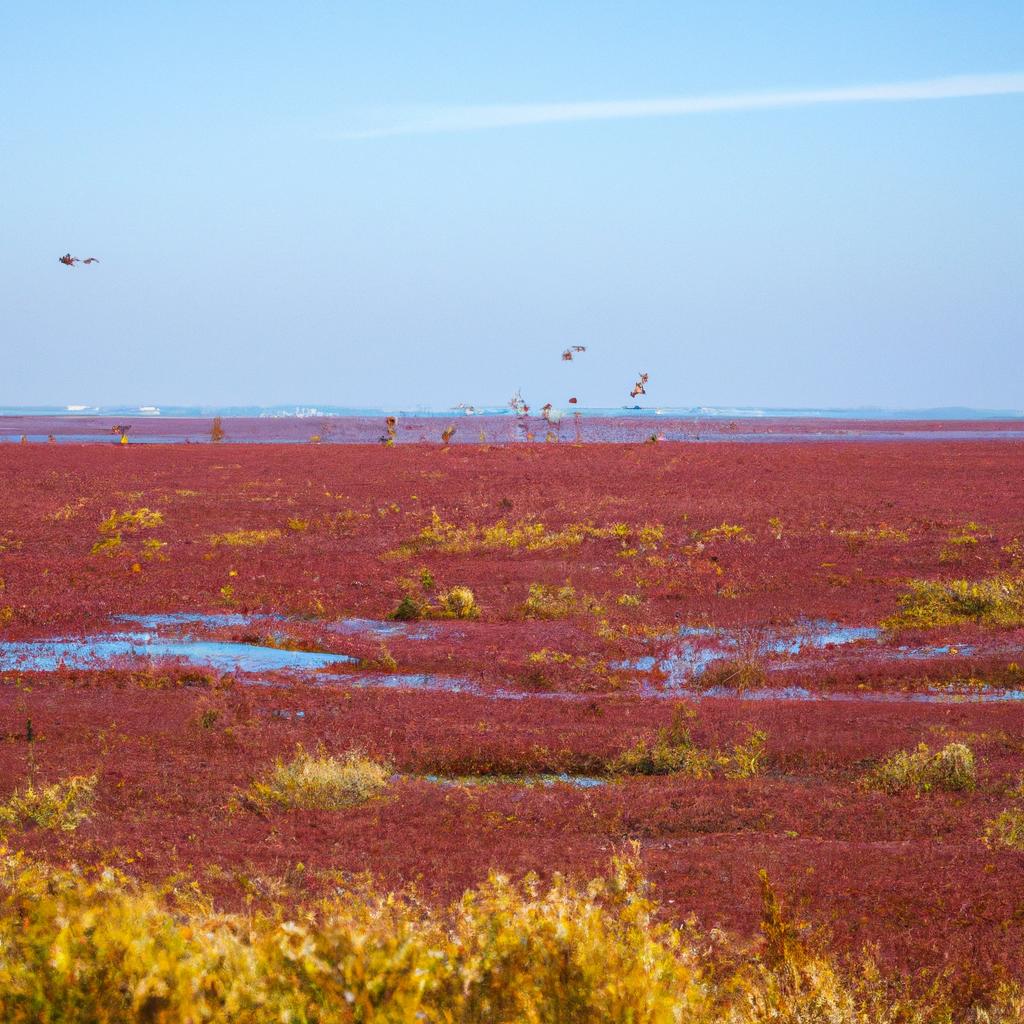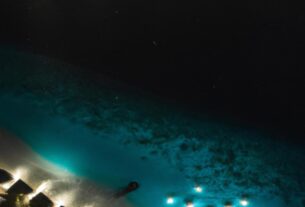Are you ready to uncover an extraordinary natural wonder that will leave you in awe? Look no further than Panjin Red Beach, a stunning coastal destination nestled in Liaoning Province, China. This hidden gem is renowned for its vibrant red seaweed, creating a breathtaking spectacle that attracts visitors from all corners of the globe. Join us as we delve into the history, culture, and ecological significance of Panjin Red Beach, and discover how you can experience its beauty for yourself.
Location and Geography
Overview of Panjin City
Panjin City, located in the western part of Liaoning Province, is a coastal city steeped in rich history and culture. Once a bustling center of trade and commerce during the Qing Dynasty, Panjin has evolved into a destination known for its unique natural wonders, including the famous Panjin Red Beach.
The Unique Wetland Environment of the Liaohe River Delta
Situated in the vast expanse of the Liaohe River Delta, one of China’s largest wetlands, Panjin Red Beach encompasses an area of over 3,000 square kilometers. This wetland environment boasts a diverse range of plant and animal species, including over 300 species of birds.
The flat terrain, extensive marshes, and meandering rivers and lakes characterize the wetland ecosystem. Within this unique environment, the red seaweed, known as Sueda, flourishes and gives Panjin Red Beach its distinct crimson hue.
The Formation of the Red Seaweed, Sueda
Sueda is a fascinating perennial herb that has adapted to the harsh conditions of the wetlands. It has developed a remarkable system of salt secretion that enables it to thrive in saline soils. Additionally, Sueda stores water in its leaves, allowing it to endure periods of drought.
Over time, the accumulation of Sueda has transformed Panjin Red Beach into a captivating natural wonder that draws visitors from around the world.
History and Culture
Panjin City boasts a rich history that spans over a thousand years, making it an enticing destination forhistory buffs and culture enthusiasts alike. Once a prosperous imperial capital and thriving trade hub during the Ming Dynasty, the city has left an indelible mark on the region’s cultural and economic landscape.
Historical Significance of Panjin City
Established during the Tang Dynasty in the 7th century, Panjin City was known as Panshan County. It flourished as an essential center of trade, attracting merchants from far and wide. In the early 20th century, Panjin City took on the role of a county seat, solidifying its position as a transportation and commerce hub.
Visitors can immerse themselves in the city’s rich history by exploring its historic sites and landmarks, such as the Panjin Pagoda, Shishan Gudu Ancient City, and the Former Residence of Zhang Zuolin.
Cultural Traditions and Festivals
Beyond its historical significance, Panjin City is renowned for its vibrant cultural traditions and festivals. The Panjin International Red Beach Festival, held in September, celebrates the beauty of the red beach. The festival showcases a myriad of cultural performances, art exhibitions, and outdoor activities, making it a must-see event for visitors to the region.
Other cultural traditions celebrated in the area include traditional Chinese New Year festivities, the Lantern Festival, and the Dragon Boat Festival, all of which offer a glimpse into the rich cultural heritage of the local community.
Role of the Red Beach in Local Folklore and Mythology
The red beach is not only a natural wonder but also holds great significance in local folklore and mythology. According to legend, the red seaweed was a gift from the goddess Mazu, who used her powers to protect the local people. The seaweed provided them with sustenance and medicine.
To this day, the red beach serves as a powerful symbol of local culture and heritage, reminding people of the traditions and legends passed down through the generations.
Ecological Importance
Panjin Red Beach is not just visually stunning; it is also a vital ecosystem that supports a diverse range of plant and animal species. From rare birds to marine life, the red beach is teeming with incredible wildlife that relies on the unique wetland environment of the Liaohe River Delta.
Overview of the Diverse Plant and Animal Species
One of the most remarkable aspects of Panjin Red Beach is the astonishing diversity of species that call it home. In addition to the red seaweed, Sueda, the beach hosts a variety of other plants, including reeds, sedges, and cattails.
The beach is also a haven for an impressive array of wildlife. Endangered species like the red-crowned crane and the black-faced spoonbill rely on the wetlands as a crucial stopover during their migrations. Additionally, a myriad of fish and shellfish species, including the horseshoe crab, inhabit the beach and its surrounding waters.
Explanation of the Wetland Ecosystem
The wetland environment of the Liaohe River Delta plays an integral role in sustaining various species and providing essential benefits to humans and wildlife alike. Wetlands facilitate water filtration, flood control, and carbon storage, while serving as vital habitats for numerous species. Panjin Red Beach exemplifies a unique wetland ecosystem that has adapted to the coastal environment’s challenging conditions.
The red seaweed, Sueda, contributes significantly to the wetland ecosystem. The plant’s dense mats stabilize the beach, shielding it from erosion caused by wind and waves. Moreover, the seaweed provides nourishment and shelter to various marine species.
Discussion of Conservation Efforts
Recognizing the ecological importance of Panjin Red Beach, conservation efforts have been initiated to protect its fragile ecosystem. The Chinese government has established protected areas around the beach, curtailing activities that could be detrimental to its conservation, such as fishing and development.
Furthermore, promoting eco-tourism has emerged as an avenue to support these conservation efforts. Visitors can learn about the wetland ecosystem’s significance and contribute to conservation by supporting local businesses that prioritize sustainability. By joining forces to safeguard this crucial ecosystem, we ensure the preservation of Panjin Red Beach’s beauty for generations to come.
Travel and Tourism
Are you ready to immerse yourself in the breathtaking beauty of Panjin Red Beach? Here is everything you need to know to plan your visit.
Guide to Visiting Panjin Red Beach
Panjin Red Beach is conveniently located in Panjin City, Liaoning Province, China. The simplest way to reach the beach is by taking a high-speed train from Beijing or Shenyang to Panjin Station. From there, you can easily hail a taxi or board a bus to your destination.
Although late September and early October offer the most vibrant views of the red seaweed, Panjin Red Beach welcomes visitors year-round, each season offering a unique and unforgettable experience.
Popular Activities for Visitors
Panjin Red Beach offers a plethora of activities to keep visitors engaged. Here are a few favorites:
-
Hiking: Stroll along the boardwalks that wind through the wetland ecosystem, allowing you to witness the beauty of the vibrant red seaweed and the diverse flora and fauna.
-
Birdwatching: Birdwatchers will be enthralled by the variety of bird species found at Panjin Red Beach, including the endangered red-crowned crane and the black-faced spoonbill.
-
Photography: Capture the stunning scenery and vibrant colors of Panjin Red Beach, transforming moments into lifelong memories through your lens.
Nearby Attractions and Accommodations
While Panjin Red Beach is undoubtedly the star attraction, the surrounding area offers additional sights and activities to explore. Consider visiting the nearby Panjin Wetland Park or immersing yourself in the rich history and culture of Panjin City.
Accommodations in Panjin City cater to every budget and preference, ranging from budget hostels to luxurious hotels. The Panjin Swish Hotel and the Jinjiang Inn Panjin Railway Station are popular choices, providing comfortable lodging options during your visit to Panjin Red Beach.
Conclusion
In conclusion, Panjin Red Beach is a captivating natural wonder that should feature prominently on every traveler’s bucket list. Its vibrant red seaweed, diverse ecosystem, and cultural significance offer an unforgettable experience. However, Panjin Red Beach isn’t just a tourist destination; it’s a vital component of the local ecosystem, symbolizing rich heritage and culture. As we face environmental challenges, prioritizing conservation efforts becomes imperative to protect the fragile ecosystem of the red beach, ensuring its preservation for future generations to enjoy.
Why wait? Add Panjin Red Beach to your travel bucket list today! Whether you’re a nature enthusiast, an avid photographer, or an adventurous explorer, the red beach promises an unparalleled experience. With its mesmerizing beauty and deep cultural roots, it’s no surprise that Panjin Red Beach has emerged as one of China’s top tourist destinations.
At TooLacks, we remain committed to delivering the latest news and information about all things nature, gardening, and animals. For more articles and resources on your favorite topics, visit our website TooLacks.




